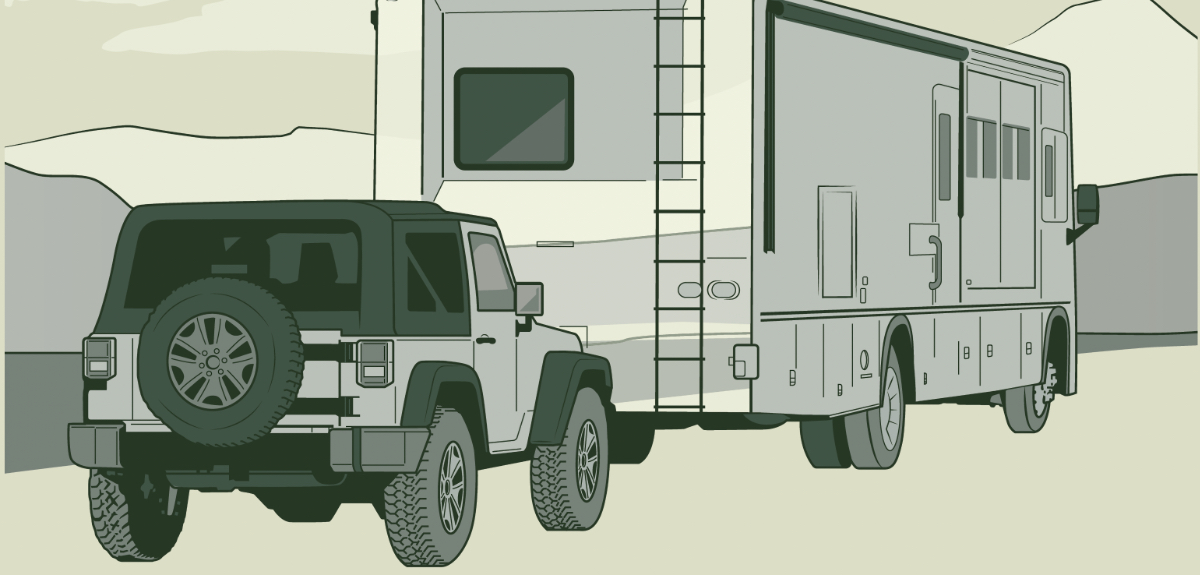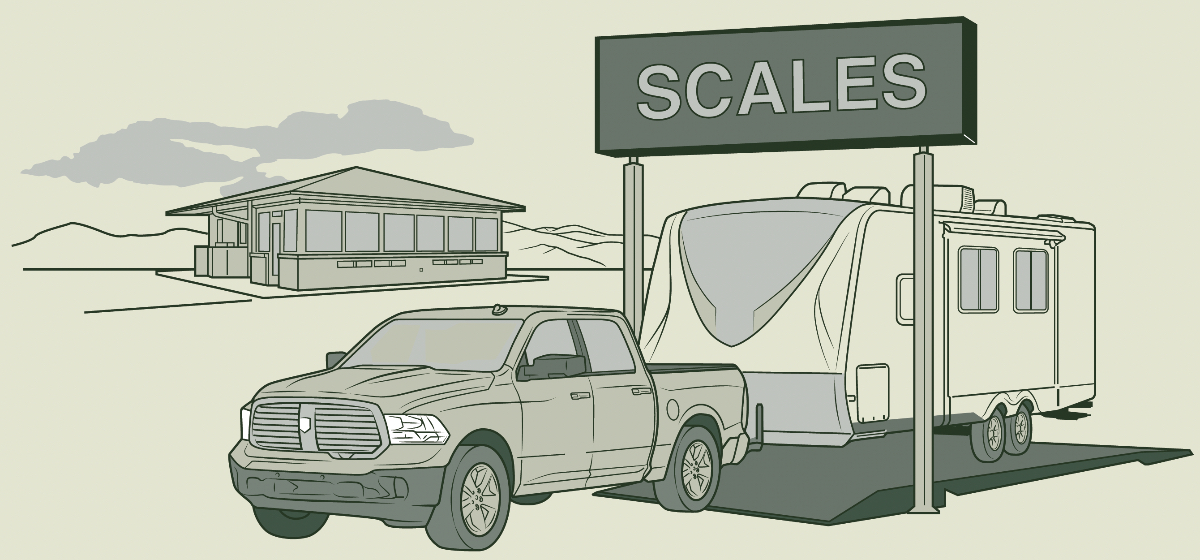Tech Q&A — November, 2023
Inside Intel on Roadie Refrigeration, Axle Care, and The Case of the Dead Battery
Image Caption:
Frustrating Fridge
Q: We’ve been having a periodic issue with the refrigerator in our 2018 Forest River Surveyor (27RBSS) travel trailer. We operate our refrigerator in “AUTO” the majority of the time, and of course, after we unplug, it converts from electricity to propane. We have never had a problem operating in this manner until this last extended trip.
The issue we run into is that after arrival at a new location, and we have plugged into power, the “Check” light comes on but is not fully bright and sometimes flickers. Sometimes it goes out after a short period of time, but other times it continues to flicker. We also believe that occasionally we have noted that the 12-Volt lights seem to flicker also. This does not happen every time we relocate.
The good thing is that the refrigerator seems to operate fine in either mode (electric or propane). During one stop, we arranged for a Mobile RV Mechanic to come out and check for issues, and of course, during that stop, the “Check” light had not come on. He conducted tests of the various items in the refrigerator area, converter, and grounds and found no issues. We continued on our trip with no operational issues.
We are back home now, and I spoke to the local RV repair shop. They indicated that without the “Check” light actually on at the time, it would be almost impossible to find that issue, and we might have to just wait until something stops working. We will be heading out again in a few months, and I’m hesitant about traveling without having the issues fixed. What are your thoughts?
—Jerry Livingston, Springfield, OR
A: It is far more difficult to figure out intermittent electrical problems like this than continuous ones. Shops hate to chase them, and it can get very expensive. However, you can continue the quest at home for free. Don’t wait until the day before you leave on your next trip. Try operating the fridge on “Auto” and simulate the conditions that trigger the problem, such as disconnecting shore power.
The fact that you stated: “we have noted that the 12-Volt lights seem to flicker also,” tells me that there may be an intermittent problem with the 12-Volt DC power supply to the fridge control board. The control board requires steady, sufficient 12-volt DC power to operate properly. I would check and clean all battery connections and fuses and carefully inspect the low-voltage wiring to the fridge. Additionally, monitor the voltage at the 120-volt AC outlet that supplies the fridge. Also, problems with the propane burner section might cause a check light.
Solution for 2021 Hyundai Palisade Trailer Controller Recall
Q: I understand Hyundai has started to make recall hardware available to some 2021 Hyundai Palisade owners with 4-pin wiring for the trailer controller recall. It has been almost a year, and Hyundai still has not contacted me about the recall for the 7-pin configuration.
I have also heard that the aftermarket wiring we had done to our Hyundai when we first purchased it two years ago to convert it from the factory-installed 4-pin controller to a 7-pin controller may have fixed the problem. Our local Hyundai dealer’s service manager thought we should still be part of the recall.
Today I contacted eTrailer.com, and they said two kits are available to provide an aftermarket remedy to the recall. We would like to start planning vacations again, and this seems like a reasonable price to avoid additional frustration. What do you suggest?
— Robert Sigal, Denver, CO
A: For the record, the recall is on 2020 to 2022 Hyundai Palisade vehicles equipped with a Genuine Hyundai Accessory trailer tow hitch and wire harness. According to the recall notice, debris, and moisture accumulation on the tow hitch wire harness module could cause an electrical short circuit, increasing the risk of a fire while driving or while the vehicle is parked with the ignition on.
Both the Curt and Tekonsha trailer light kits are from reputable companies that have been in the RV market for many years. I would go with either of them. When Hyundai finally gets its act together, I would take the car to them to clear the recall.
Battery Goes Dead During Storage
Q: I have a 2018 Thor Chateau Class C with only 13,000 miles on it. It will not start after being placed in storage. I jump-started the battery and let the engine run and turn off. I tried to restart it, and it would not start up. I think I have a bad battery or bad alternator (the engine battery is new). What do you suggest?
—Joe Garcia, Lakeland, FL
A: This is quite common. Motorhomes have numerous small parasitic current draws, and when they are shut off, these will run down the batteries over time. Additional draws, such as a storage compartment light left on, can make it worse.
When batteries are deeply discharged, especially if left discharged for a period of time, they become sulfated and can be ruined even if fairly new. Take the battery to an auto parts store for free testing. If it can be recharged, or after it is replaced, install it and start the engine. Note if the charging indicator shows it’s charging or not. Measure battery voltage while it’s running—it should be above 13.6 volts. If it is, the alternator is working. Every RV owner should have a small battery charger and a volt-ohm meter. But if you don’t, take it for on-vehicle alternator testing.
Also, measure the current draw from the battery when everything is shut off. Once you have that part done, let’s look at how it’s stored. If it is stored on your property, connect a maintenance charger to each battery during storage. If it is stored in a rented yard, maintain a charge in all the batteries with a solar panel. Small ones are available just for this job.
Ford F-53 Suspension Fixes
Q: We purchased a 2014 Winnebago Vista 26HE on a Ford F-53 chassis and recently took it out for a 3,000-mile trip. We quickly realized that we needed to upgrade the suspension. There was a very good article in the August 2022 edition about an upgrade on an Allegro Open Road with factory-installed Sumo Springs.
We are retired on a tight budget, and I was wondering which of those upgrades would give us the biggest bang for the buck if done one at a time. We do not have Sumo Springs yet. The steering stabilizer and sway bar are no-brainers, but our biggest complaint is the extremely rough ride. Would Sumo Springs soften the ride and help with sway control? These seem to be an expensive option but may help two problems at once. I’m just not sure where to begin.
— Michael Bullock, Titusville, FL
A: There are a lot of things that can be done on the F-53 chassis to improve ride and handling. Owners complain about rough rides, leaning side to side, and yawing or tail wagging. Because you are on a budget, try one thing at a time. Let’s start with proper tire pressure for the actual load. With the coach fully loaded for a trip, topped up with fuel and water, cargo and passengers weigh it on a truck scale, noting individual axle weights. Look up the proper load-inflation chart on the manufacturer’s website for the specific make and model tires you have. Set pressures accordingly.
A steering stabilizer won’t make it ride any softer, but it should help with tracking, and they are not terribly expensive. Sumo Springs front and rear should offer a palpable improvement and also aren’t too costly. Because your coach is almost 10 years old, a new set of premium shocks, such as Koni or Bilstein, will make a noticeable difference. If you can afford it, an aftermarket rear track bar will also make a considerable improvement and reduce tail wagging. You can save a lot by shopping around and installing parts yourself.
Trailer Tow Rating Confusion
Q: In the 2023 Tahoe/Suburban manual, page 293, right column, it states, “The resulting weight cannot exceed the GCWR value shown on the Trailering Information Label.” Where on the vehicle is the Trailering Information Label? I want to make sure of the maximum towing capability of my vehicle.
— Dennis Aten, Moorpark, CA
A: I told Mr. Aten that the Trailering Information Label is located on the driver-side door jamb and provides information that’s specific to your vehicle and vital to towing. Manufacturers post important information there and on the inside of the glove compartment door.
Subsequently, he replied: “I found the label, but it looks confusing. GVWR: 7,500 LBS, GCWR: 14,500 LBS, RGAWR: 4,300 LBS, Curb Weight: 5,918, Max Payload: 1,582, Conventional Trailer Weight Rating (TWR) 8,100 LBS, Max Tongue Weight 810 LBS, the TWR is 8,100 LBS. But GCWR of 14,500 less GVWR of 7,500 is 7,000 pounds. So why the difference? Can the max trailer weight be 8,100 pounds or 7,000 pounds?”
The Gross Vehicle Weight Rating (GVWR) is the most your loaded vehicle can weigh. The Gross Combination Weight Rating is the most the truck and trailer combined can weigh. The payload is how much cargo can be carried in the truck. Curb weight is the basic unladen weight of the vehicle. Rear GAWR is the rear axle capacity. To calculate available towing capacity, subtract the actual truck’s loaded and fueled weight with passengers from the GCWR. With a light load such as driver and fuel with no cargo, you could theoretically have a towing capacity of 8100 pounds, but it’s likely substantially less when loaded for a trip. Also, it’s best to not run at absolute maximum ratings at a sustained use. So essentially, your tow rating is 7,000 pounds.
Overloading Axles
Q: I have a two-pack of Andersen leveler systems. We have been using just one for our trailer and doing fine. Why should we put one under each axle?
— Larry Young
A: Because you are overstressing your tires and axles. The trailer has two axles to distribute the weight as part of its design, as one axle can’t carry it. If you look at the photos on their website, both axles are supported, not just one.
Air Conditioner Concerns
Q: We recently purchased a 2018 Genesis Supreme Toy Hauler, model 375SRT. I have an oversized garage with an overhead door that is 14 feet wide, but the opening at the top is 13’3”. Needless to say, the fifth-wheel trailer will not fit because of the height of the opening. The height is 13’6” with the air conditioners. I measured the air conditioners, and they are 13” high. The one in the primary bedroom is very loud. Are there any air conditioners on the market that are low profile (like 6 feet or less)?
— Lester Carroll
A: The lowest-profile roof mount air conditioners I could find are right around nine inches tall. You might look into ducted air conditioners that mount in a cargo compartment. This would reduce height and noise at the same time.
Subsequently, I heard from Mr. Carroll again: “I solved that problem. I have a General Contractor coming out today to raise the garage opening to 14 feet. That way I can get the toy hauler in without a problem. My next question: Is there an air conditioner that is quieter than the one that is in the master bedroom now?”
There is a company called RV Airflow that produces retrofit components designed to reduce air conditioner noise and improve efficiency at the same time. Kits are available for a number of popular models. Check out www.rvairflow.com or call (574) 536-2472.
Rough Ride
Q: We purchased a 2018 Thor Freedom Elite (23H) Class C motorhome a couple of years ago and have been less than impressed with its rough ride and poor highway handling characteristics. The chassis is a Ford E-350 and had about 30,000 miles on it at the time of purchase. I suspect that all of the components are original (ie, tires, shocks, etc.). Any suggestions to improve the ride and handling characteristics?
—Mark Rees
A: Make sure tire pressures are set for the actual load using a load-inflation table and truck scale premium units such as Bilstein or Koni. You might also consider installing Firestone or Air Lift airbags to the rear axle. They cushion the ride if you inflate them just right. You can spend a lot chasing this complaint. You’ll have to get more specific on what you dislike about the highway handling—for example, rut tracking, tail sway, constant steering corrections, or lean-in turns—so we can pinpoint solutions. Let me know how satisfied you are after new shocks and/or airbags.
Have a Question?
Looking for answers on all things RV, including systems, engines, accessories, or construction? Submit it to our expert at [email protected], and it may be selected for publication. You must include your name, city and state, phone number (will not be published), and type and model of your RV.




